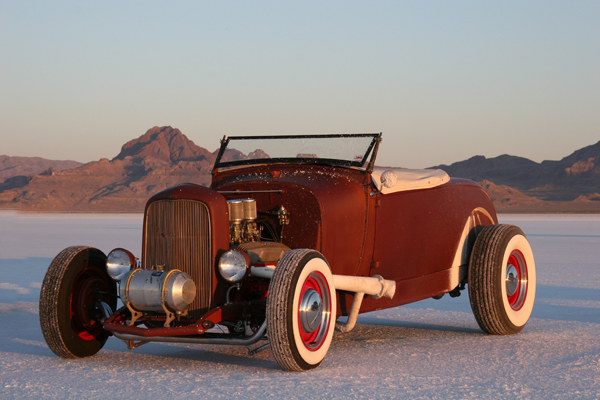
2012 event here.
2011 event here.
2009 event here.
2007 event here.
2005 event here.
My friend Ann and I wanted to get an early start to this years Bonneville Speed Week. We contemplated camping out the night before, but Ann was coming back from the horse races with Robert and I had an early morning with H for the Provo half marathon. So, it was out of the door at 3:30am to pick up Ann and off to the Salt Flats. Last years race provided for some spectacular photography and served as Robert and Ann’s introduction to salt flats racing. It’s safe to say they are hooked.
So, a cup of coffee, a couple of doughnuts and we were on our way. The problem of traveling with a photographer is that one has to plan for “contingencies”, such as the ideal shot that suddenly appears. It’s entirely possible that if the driver is a photographer, he/she will suddenly pull off the road to grab a shot or if the passenger is a photographer, they might suddenly shout “stop the car!” in order to obtain that special shot. It’s hard for non-photographers to travel with a photographer because of this sort of behavior, so it was an extra special treat to be traveling with Ann as this is understood and shared knowledge. The car comes to a rapid stop, no words are spoken and photographers pile out of the car configuring their gear to capture those particular moments of light and form that will never return.
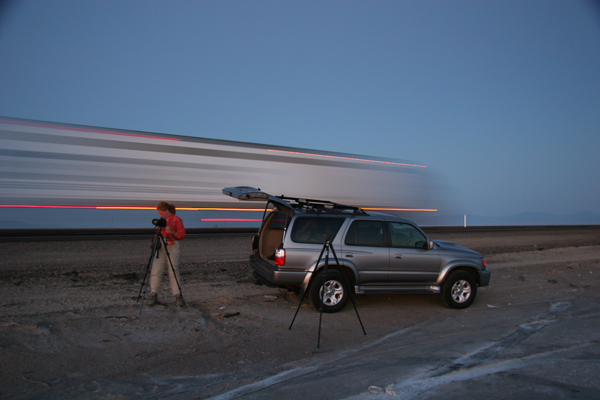
Of course one has to be careful about just where to pull off the highway out on the salt flats as there are scars in the thin salt crust where people have driven onto the salt intentionally (thinking it would be cool to drive on salt) or not (falling asleep at the wheel) and broken through the think salt crust only to discover the incredibly thick and sticky mud underneath. Out where the races are held however, the salt is more carefully monitored for surface integrity. In fact, because of salt mining and environmental concerns there is the possibility that without care, the salt flats will not last. Therefore organizations like Save The Salt have sprung up to preserve the salt for its historical and racing future.
Additionally, when planning to race out at Bonneville, one also has to carefully monitor the weather as there are years where racing is not possible due to water on the course. I was concerned as the day before we were to go out, Salt Lake City was hit by a deluge, however, the salt flats appeared to have missed this storm and the surface of the salt and weather proved perfect for racing.
Out on the salt, cars begin lining up before sunrise to get their chance to run. It’s first come, first run and there appears to be many more racers than in previous years, so traffic is becoming a concern as the lines stretch out. Added benefits of running early in the morning are a better chance of still air and the cooler temperatures lead to better charge/air mixtures, delivering more performance. The only problem with starting out early is that you are racing into the sun which can prove problematic.

We arrived on the salt just after sunrise to capture the salt flats racers and their cars bathed in that perfect, longer wavelength light that makes the golden hour so special. Of course Studebakers are one of my favorite makes on the salt flats and the Lowey coupes are in my opinion the most perfect expressions of the make. Here is an image of H and I in our 1953 coupe.
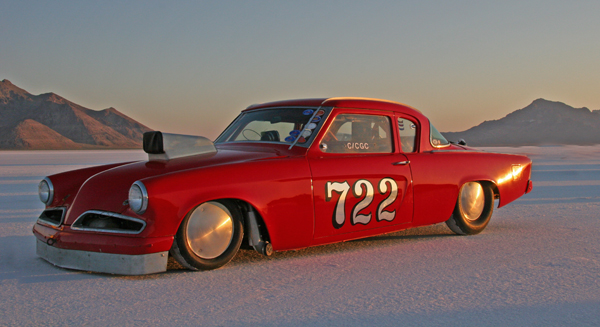
Studebakers of a number of models are a common sight on the salt flats, but there are not many Studebaker pickup trucks that race. This one driven by Norris Andersen was one of the first I’d seen.
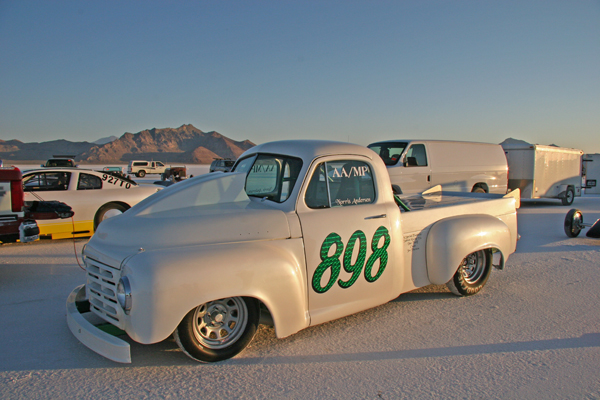
Of course Studebakers are not the only historically significant body style on the salt as the streamliners have perhaps an even longer history of racing on the salt.
People also bring all sorts of hardware as support or run about vehicles for speed week and the rat rods are present in healthy numbers. I must admit to having a particular soft spot in my heart for the rat rod as it is a no-nonsense back to the basics return to hot rodding. Originally a pure form following function design, it has evolved into its own presence.
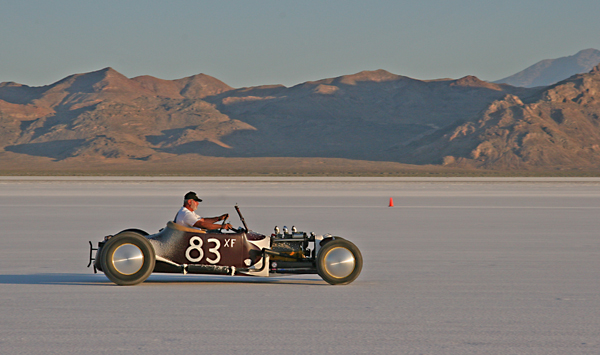
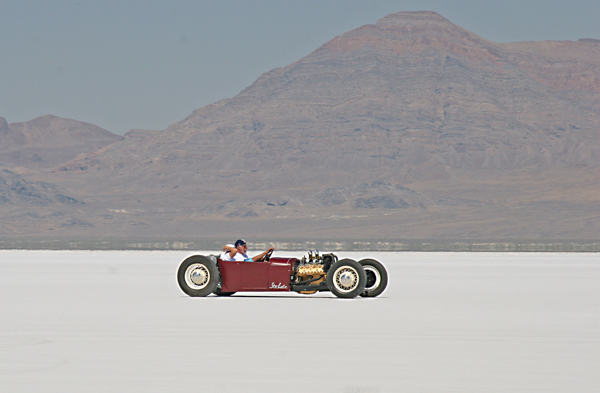
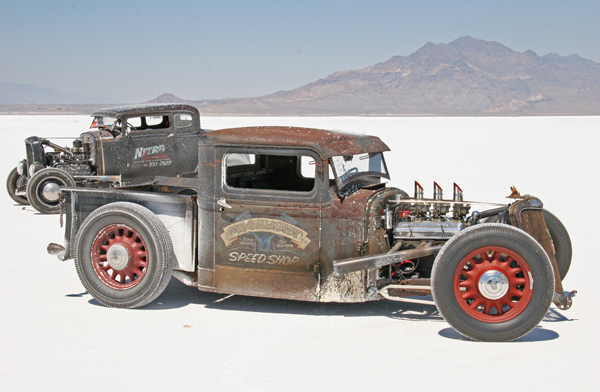
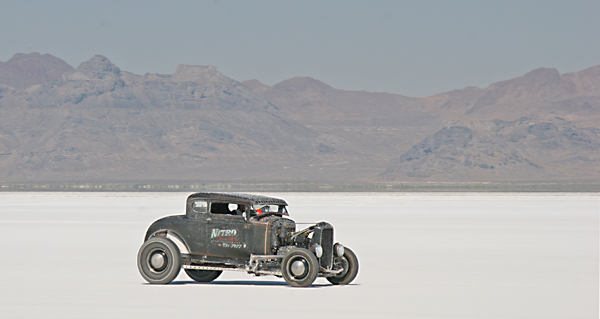
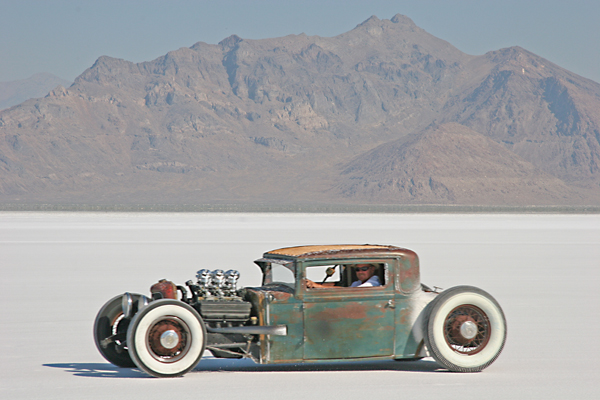

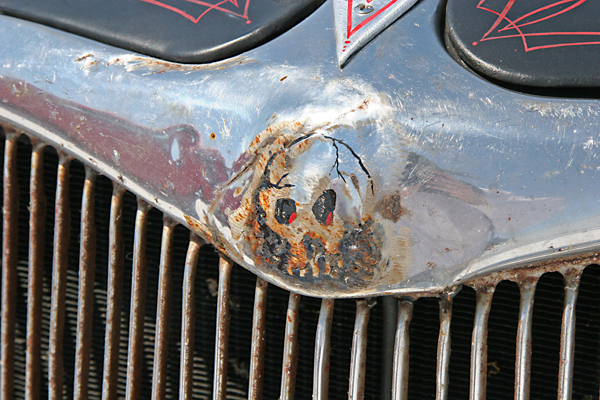
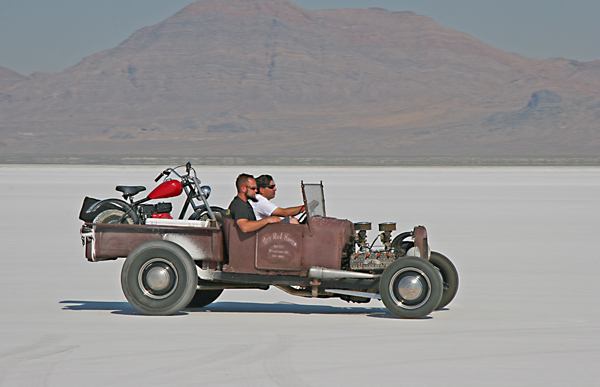
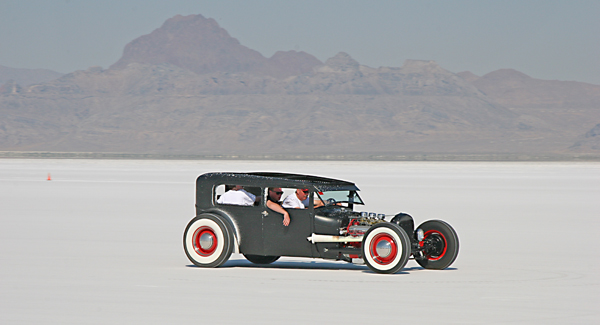
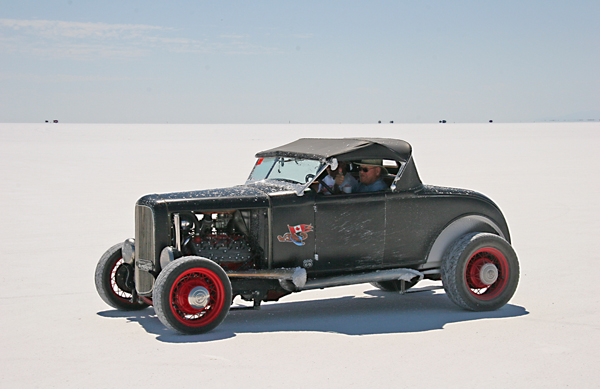
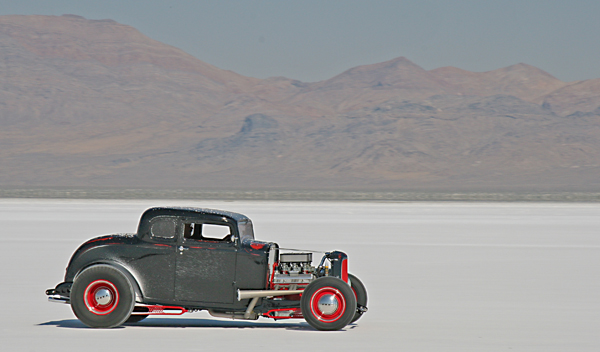
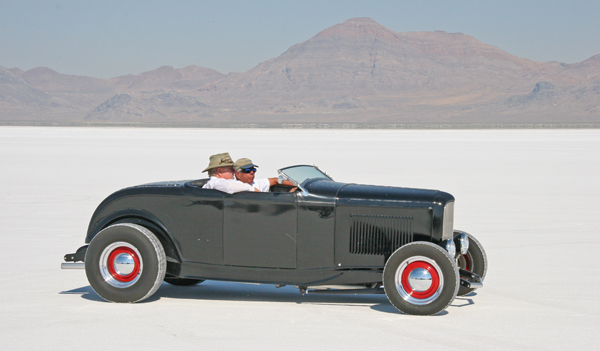
Even though there is a sense of freedom and individuality out on the salt flats, there is an organizing body that ensures safety and certification. The Southern California Timing Association helps to put on both the Bonneville salt flats races and the El Mirage races, certifies the results, ensures that the cars are safe to run and helps to stage the cars for their record attempts.
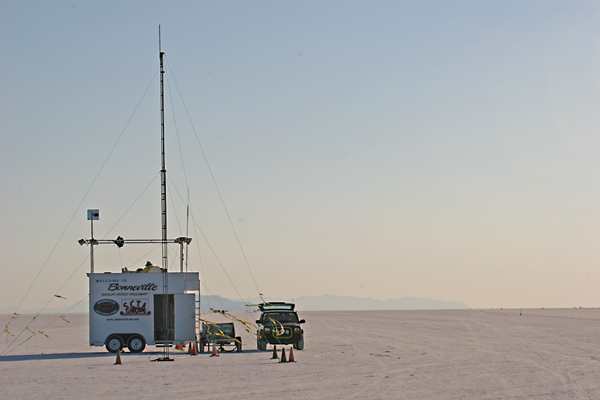
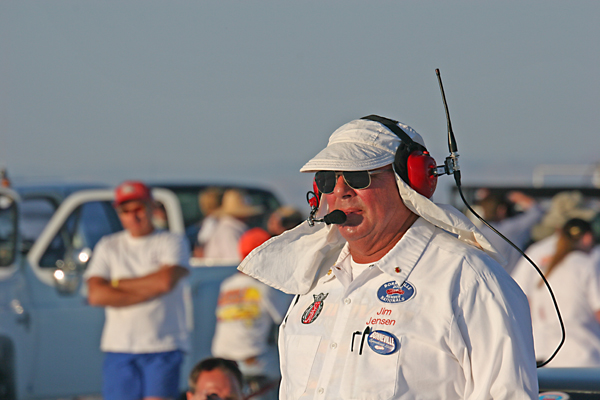
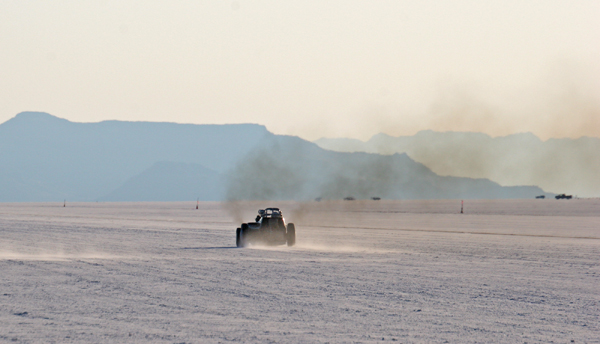
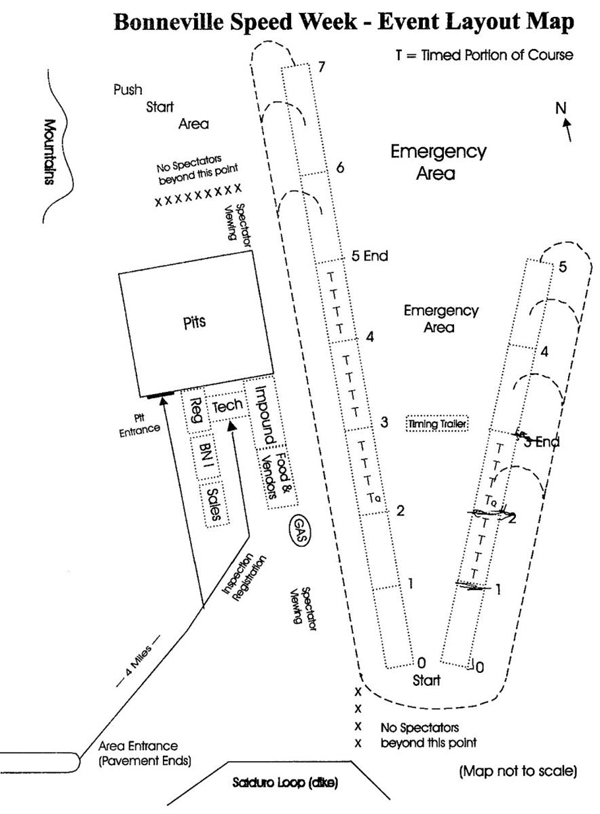
While it’s not a Bonneville racer, it’s mine and the 4Runner hauls all of our gear to where I need it comfortably and most importantly reliably. We always got photos of our cars when I was younger, so that programming appears to have stuck.
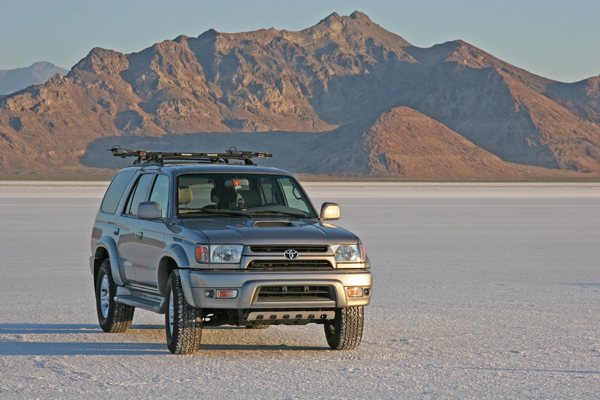
I wished I was able to capture images of this Indian motorcycle on the salt just as the sun came up. The ivory color would have looked tremendous in the golden hour with the salt as a backdrop.
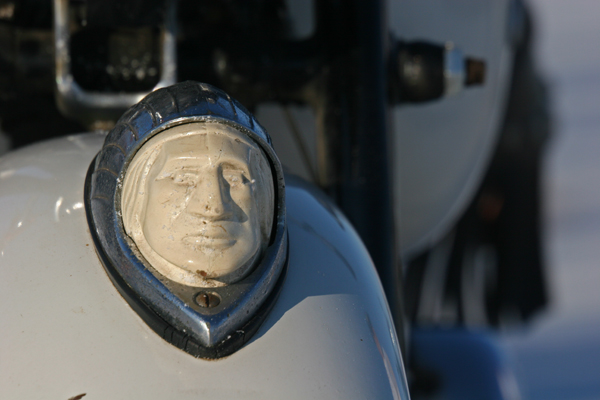
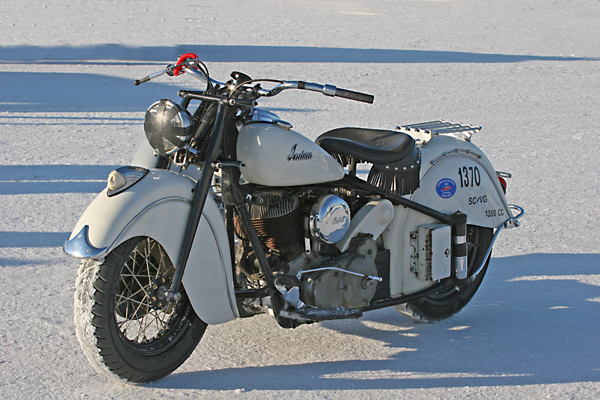
Of course motorcycles have a long history on the salt as well with efforts to break speed records with just about every make and model bike you can imagine. I had the pleasure of talking with Kevin Draper of Majestic Turbo and Steve Starrett of Team Triumph Texas. These guys are driving the world’s fastest Triumph motorcycles with pretty impressive power out of a 1300cc Triumph engine.
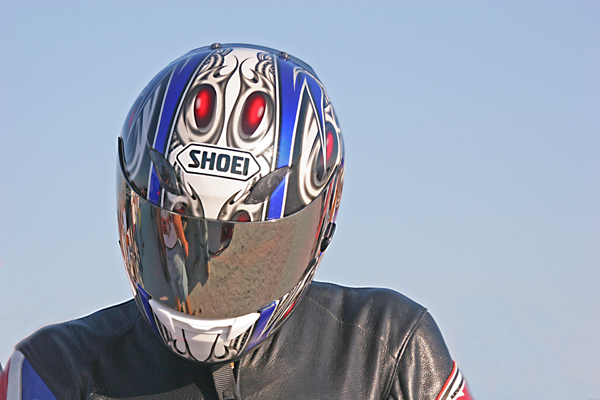
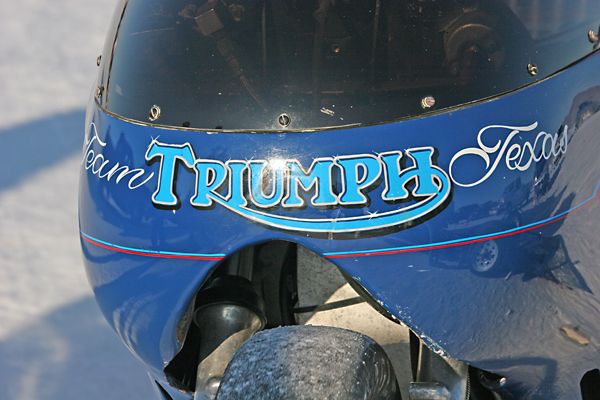
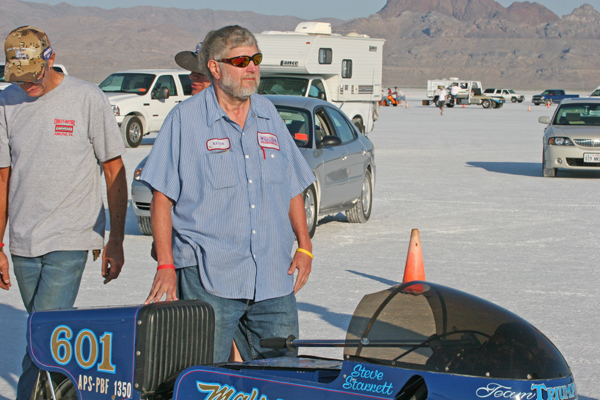
I also got to talk with Tom Liberatore of Pepperoni Brothers Racing who has running his 1973 Moto Guzzi V7Sport at over 120MPH.
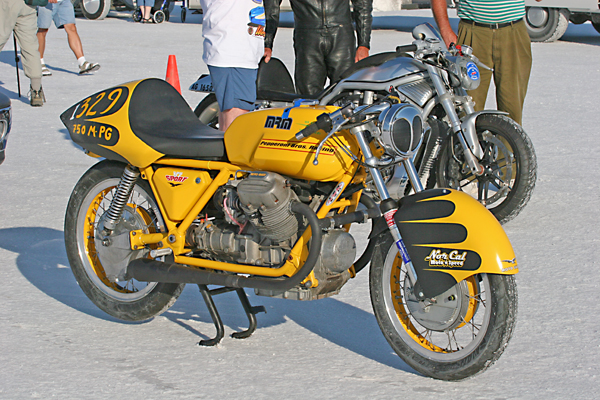
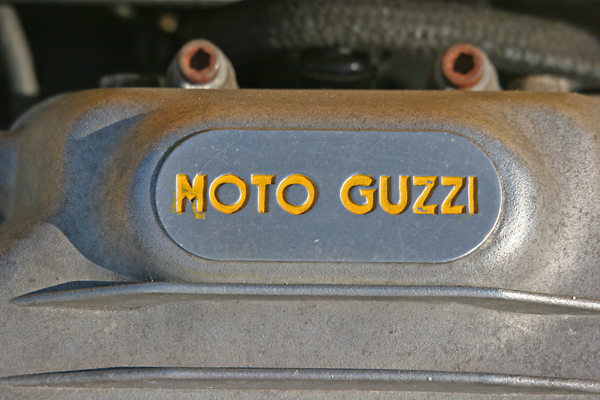
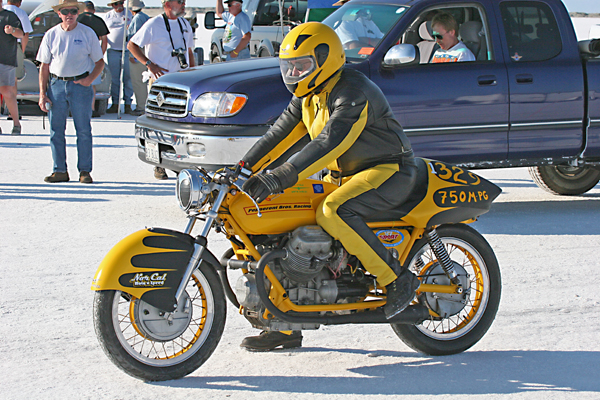
I have always been impressed with the relaxed nature of salt flats racers. About 15 years ago, I used to come out to help out Ron Hall in his 1963 Avanti and enjoyed all of the interactions with racers of all sorts. It is very much an approachable atmosphere and while not necessarily a place for kids, Speed Week has very much a family feeling with racers of all sorts willing and able to loan tools, equipment and parts to other teams. One of the racers I talked to this year that epitomizes this ethic was Amir Rosenbaum of Spectre Performance, as when I met up with him, he was busy loaning a tool to another race team.
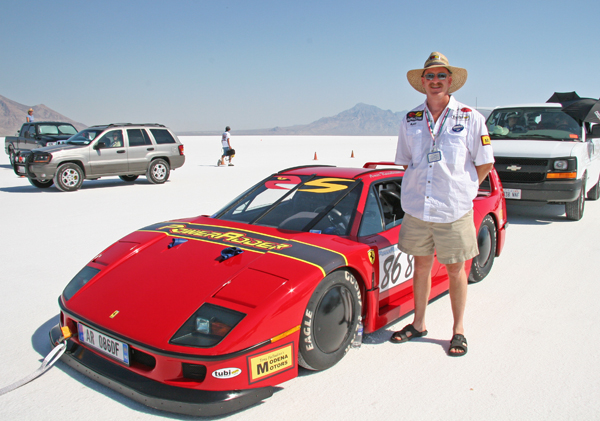
Amir was running the first Ferrari F40 I’ve ever seen on the salt. In fact, Ferraris are fairly rare on the salt. Bob Norwood some years ago had a 288 GTO kit bolted onto a 308 chassis with a big block Chevy NASCAR engine that he ran out at Bonneville, but Amir is the first person I’ve seen run a “production” Ferrari at Speed Week.
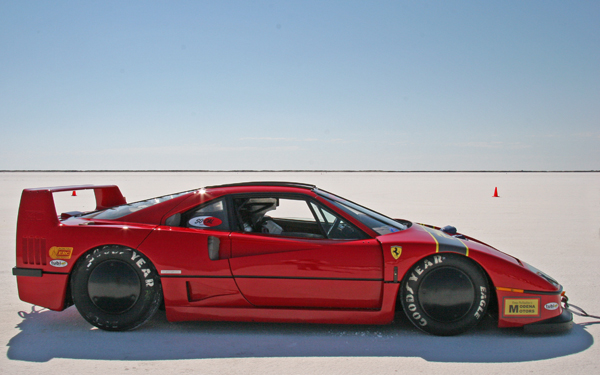
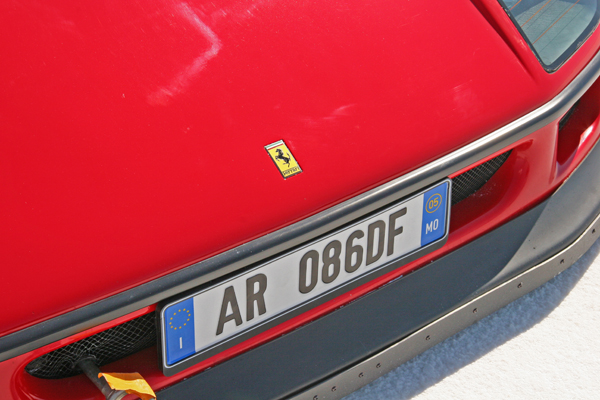
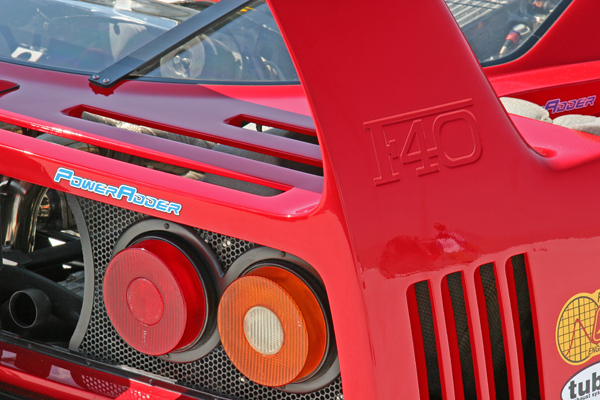
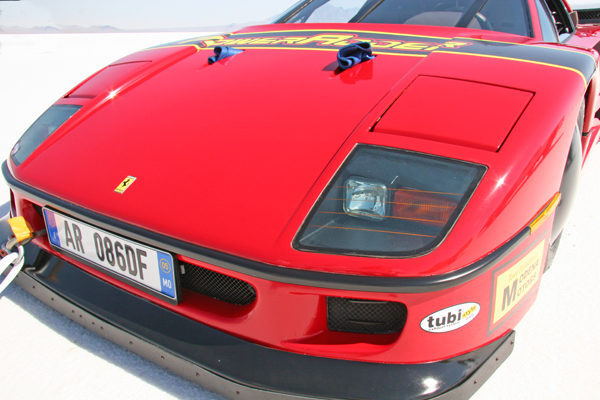
And check this out. You don’t see many Ferrari’s with parachutes to help slow them down.
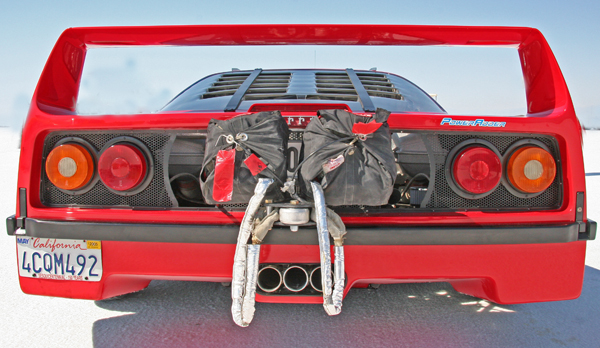
The shift knob was a nice touch as well.
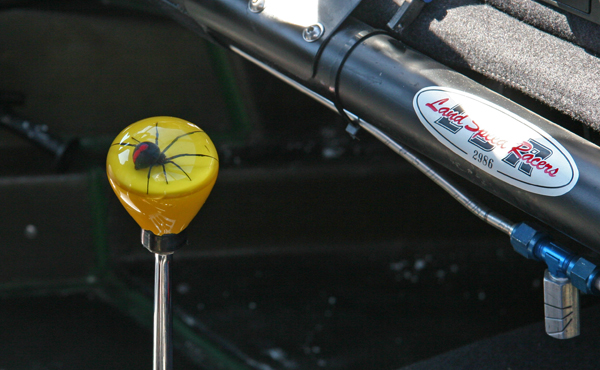
If European cars are the exception at Bonneville, American cars the mainstay. Cars from the 60s and 70s are well represented such as this 1969 Dodge Daytona.
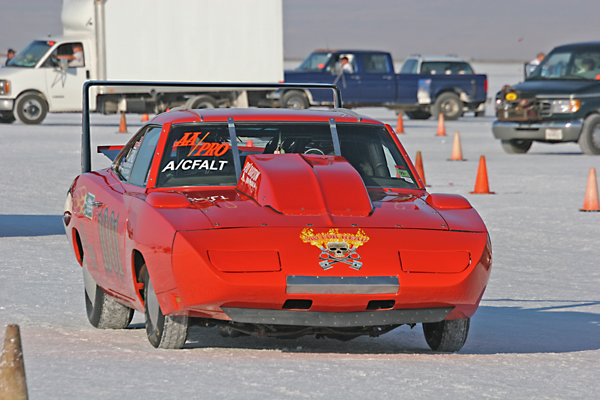
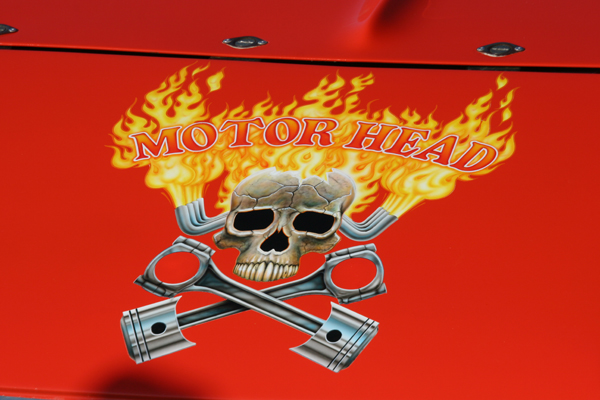
More popular than the American iron of the 60s and 70s however, are cars from the 1930s 1940s and 1950s. I already mentioned the Studebakers who’s streamlined bodies have served as the basis for many a Bonneville speed record, but the Hemi engines from Mopar now part of Daimler Chrysler are one of the main types of engines used to power the various chassis. One of the original cars the Hemi (short for hemispherical combustion chamber) came in was the Chrysler 300. I don’t know if this 1955 Chrysler 300 Hemi is the original one from the La Carrera Panamericana race where Chrysler fielded 3 cars back in 1955 or not. Perhaps it is a reproduction, and if so, the builders have done a good job even down to the bent license plate. If it is an original, it is truly a rare piece of history.
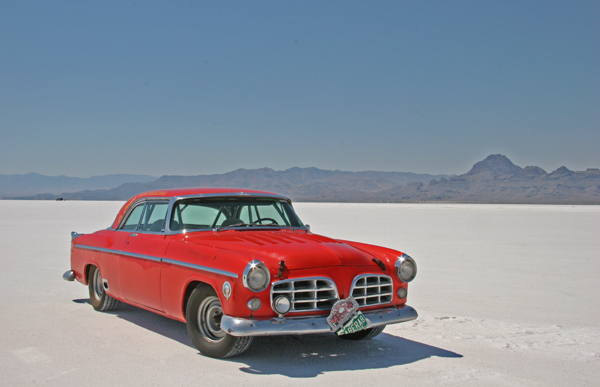
More common are modified hot rods such as this 1950 era Chevrolet Sport Coupe.
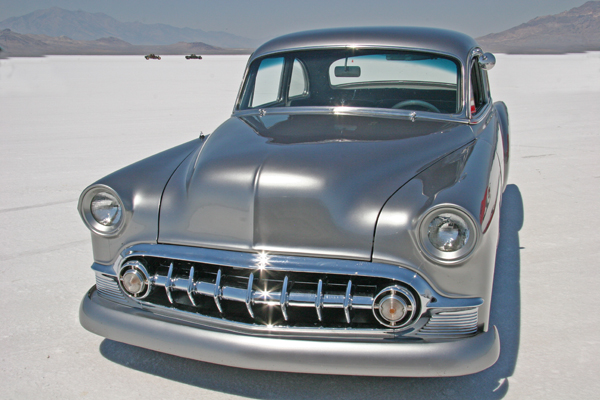
Or other cars such as this beautiful 1938 Chevy coupe run by the Road Runners.
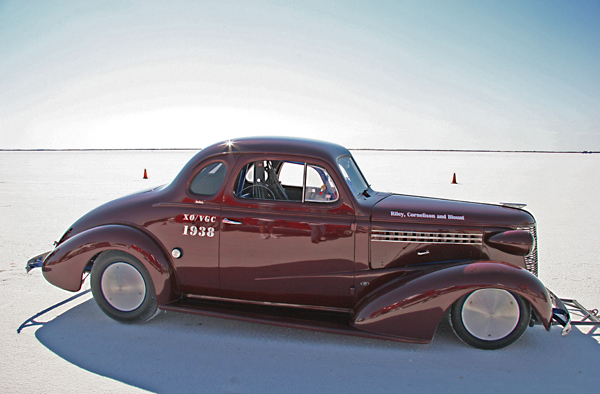
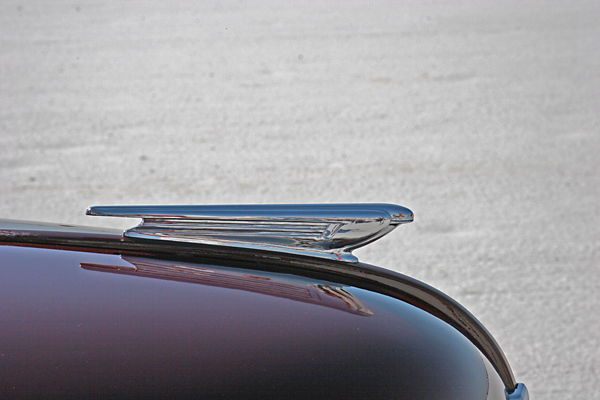
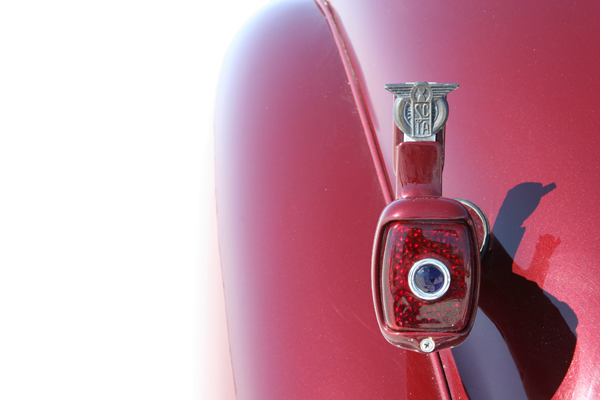
We also met up with Robin Dripps who was running car number 1986, a 1943 Ford roadster in the E/STR class at 164MPH. Interestingly, Robin is a professor of architecture at University of Virginia.

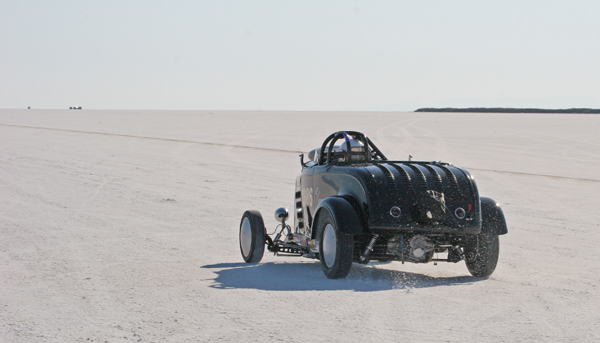
Yours truly with my trusty Canon 20d.
Even though Speed Week at Bonneville is a race that individuals can get into and afford, there are occasional efforts sponsored by large corporations with significant backing. For the last few years, the So-Cal Speedshop & GM have teamed up to run several cars.
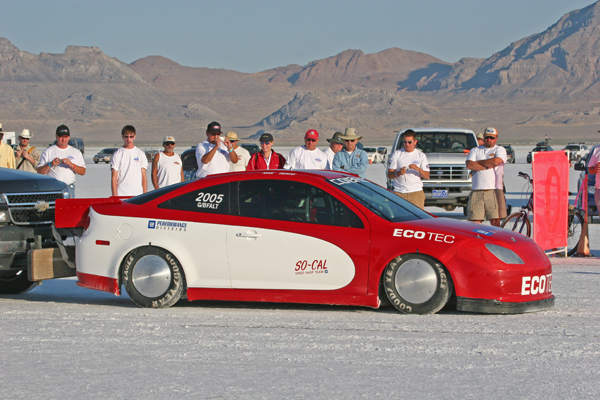
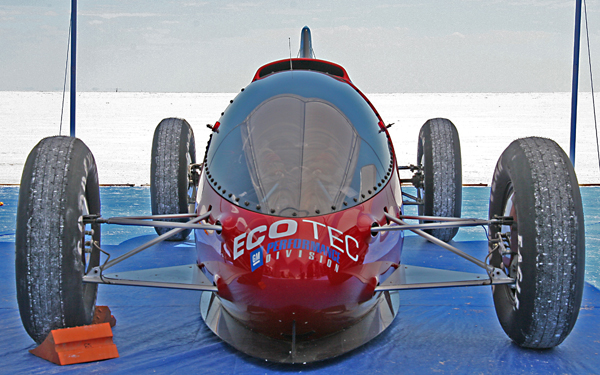
This year JCB had an amazingly impressive group that looked for all the world like a Formula1 paddock for their Dieselmax effort.
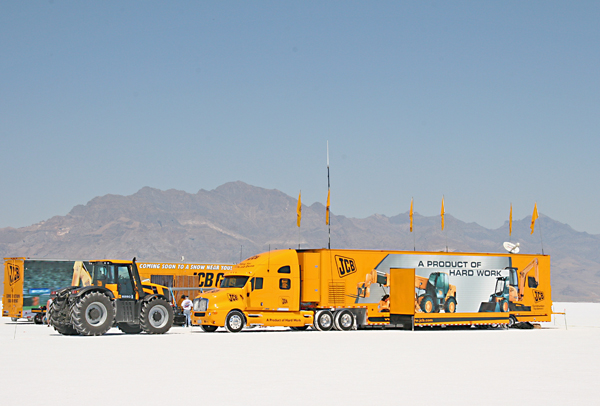
It turns out they ultimately did just over 317 MPH and they did it in style as their push vehicle (aka JCB 8250 tractor), wearing some big Pirellis has to be one of the coolest pushers I’ve ever seen out on the salt flats.
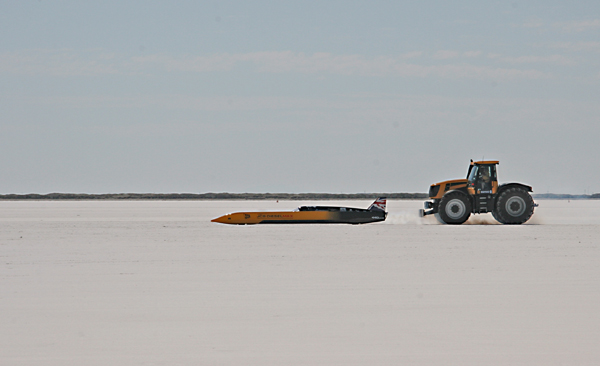
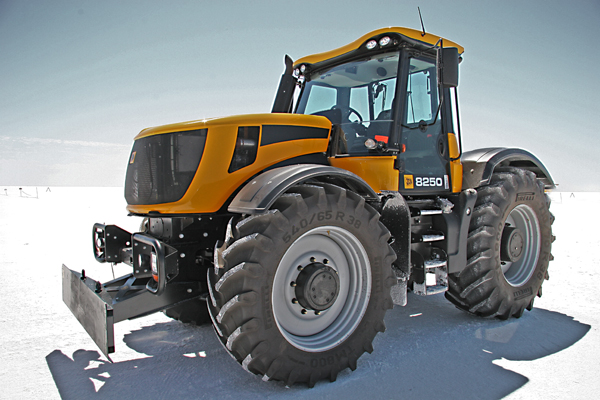
Even though camping on the salt flats is not permitted, if one is racing out there you need some protection from the sun and this was one of the more stylish portable abodes I’ve seen on the salt and it somehow fit perfectly.
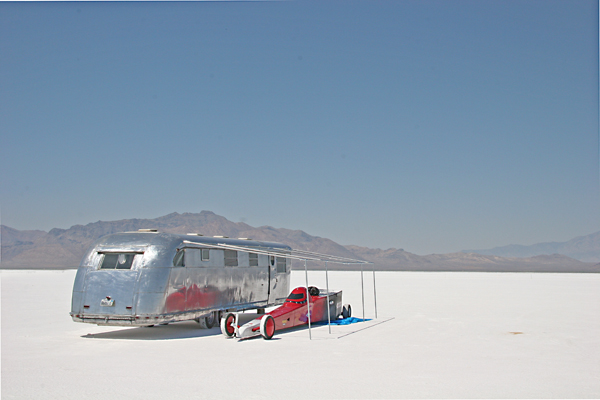
Not everything on the salt flies so close to the ground. Just about every year there are aircraft that make an appearance and land on the salt. These aircraft are either visitors or are ferrying emergency parts for racers on the salt. Its hard to get anything in places as remote as Wendover Utah and sometimes you have to call in a favor from friends in Salt Lake that can either drive or fly out. If you are thinking of doing this however, just remember that the winds can pick up dramatically out on the salt, so be sure to remember portable tie-downs that do not screw into the ground.
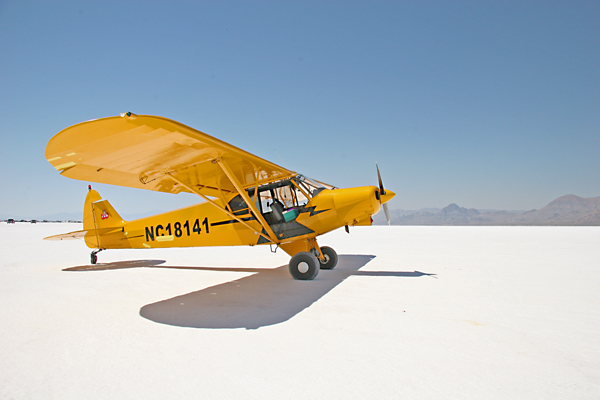
Other aircraft that appear on the salt are often planes, helicopters or ultralights that document record breaking runs from the air such as this ultralight that was shooting video of the JCB Dieselmax effort. The problem with this of course is the speed differential, given the 317MPH run the Dieselmax achieved.
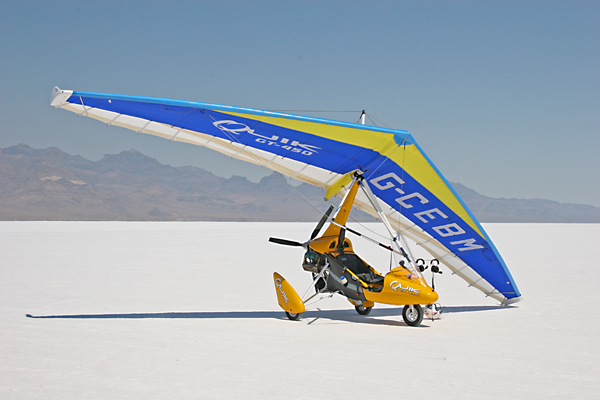
Every year, I have to try and decide which cars I liked most out on the salt and this year, I had to decide on a combination of car and motorcycle. I have no idea who the owners are and could not find them, but this image was about as perfect as one could get for the salt flats. It is a timeless sort of image that really could have been taken any time in the last 40 years.
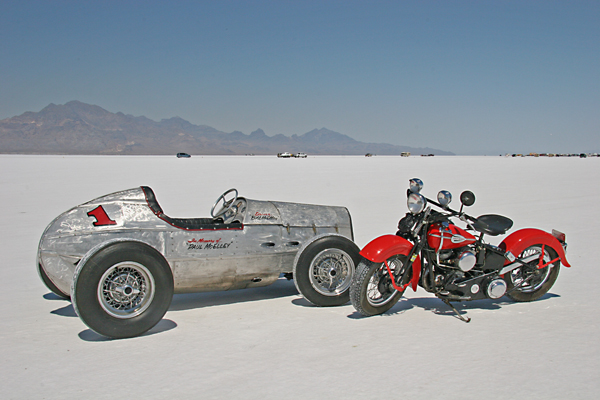
A shot of a Ford coupe slowing after deploying his parachute.
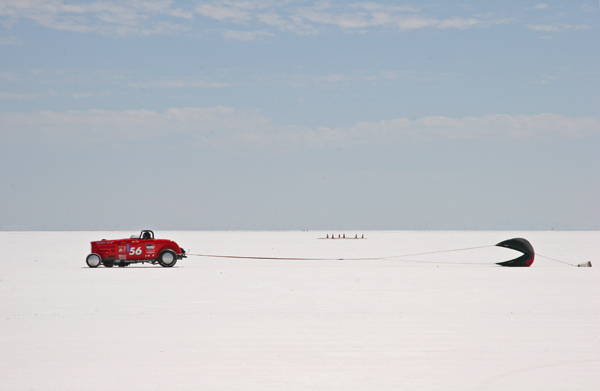
To give you some idea of the diversity out on the salt, there are on occasion some really bizarre bits of hardware such as this Detroit Diesel running quad turbochargers. This thing was shockingly fast going down course and did so with a terrific cloud of diesel smoke following it. Tres cool….
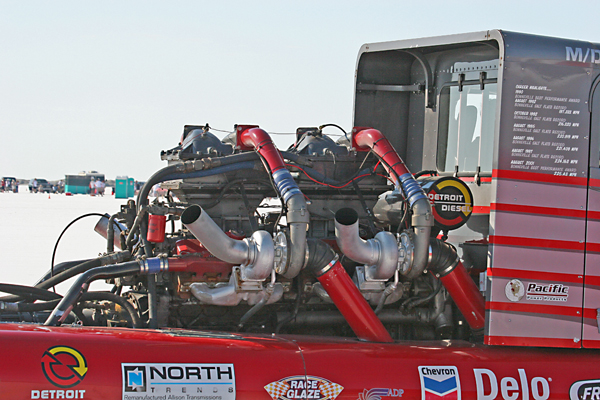
I tried to get a few shots in infrared using Ann’s filters, but the Canon 20d has a pretty significant IR filter in front of the CCD making any action shots pretty tough. I was hoping to get some shots of hot chrome and engines, but due to the added filtering, they were simply too slow. Canon makes a version of my camera (the 20da) for astrophotography for the Japanese market only I believe and it would be lovely to obtain one here. Nikon cameras seem to be a bit faster in the IR dept. than the standard Canon cameras right now.
Well, that’s it for this year. Weather permitting we’ll all be back next year to see what else there is to see and I’ll be there to capture more pictures. Also as I did last year, if you are interested in seeing a little movie of a vehicle going down track at over 200MPH, here.
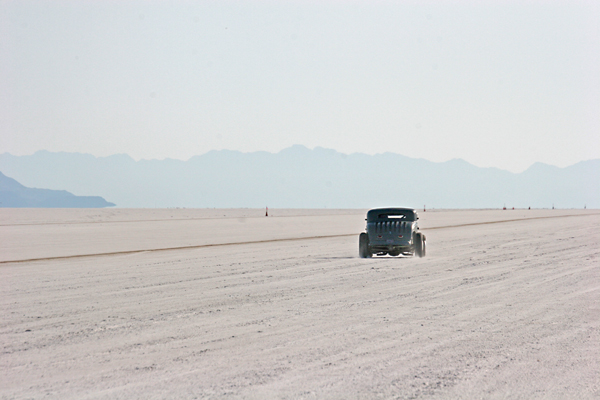
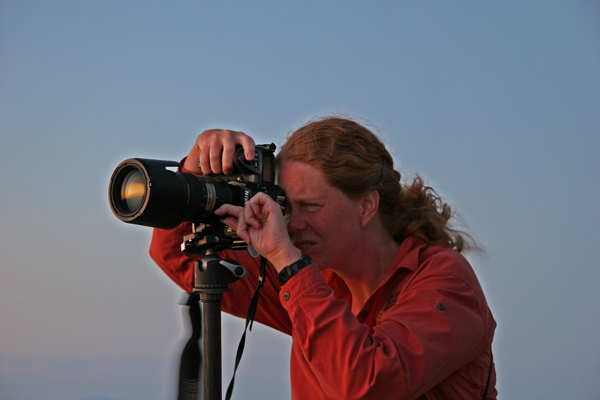
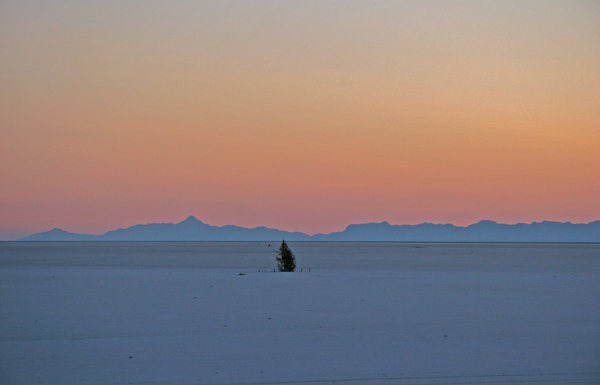
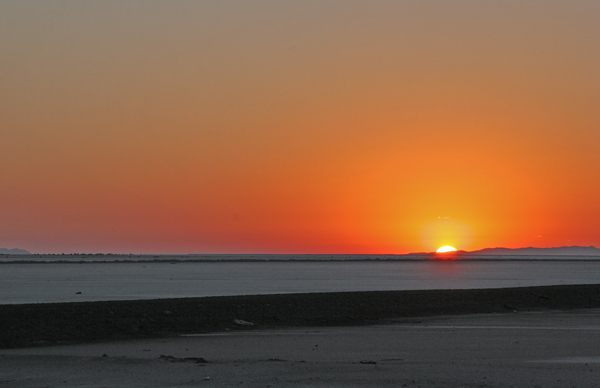
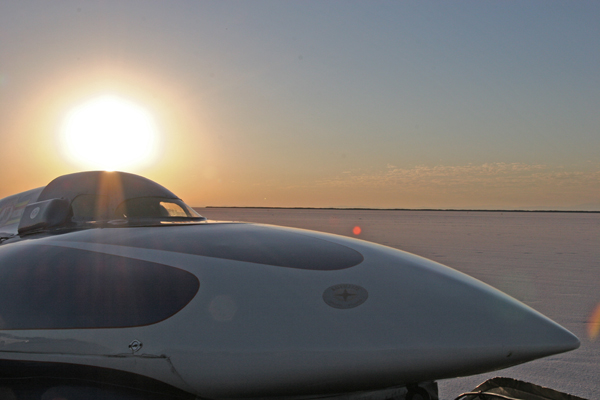

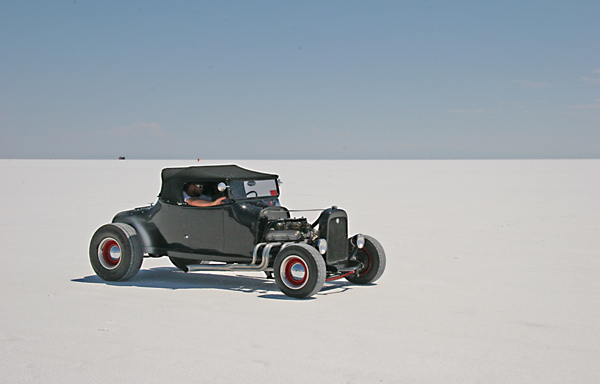
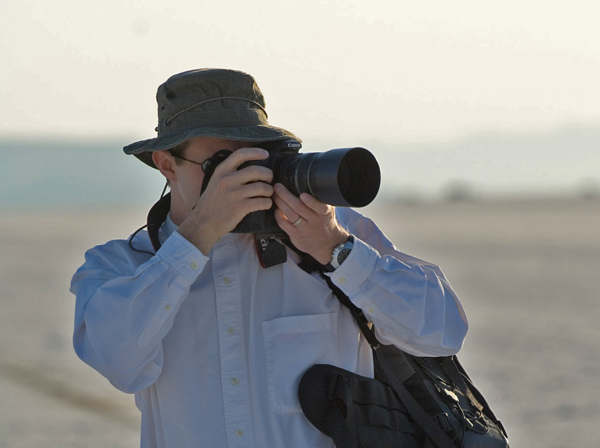
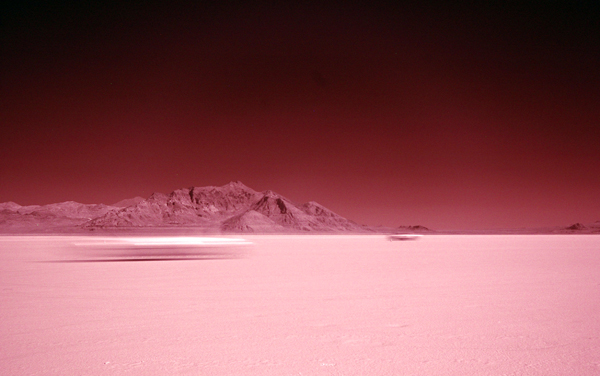
6 Replies to “Speed Week 2006”